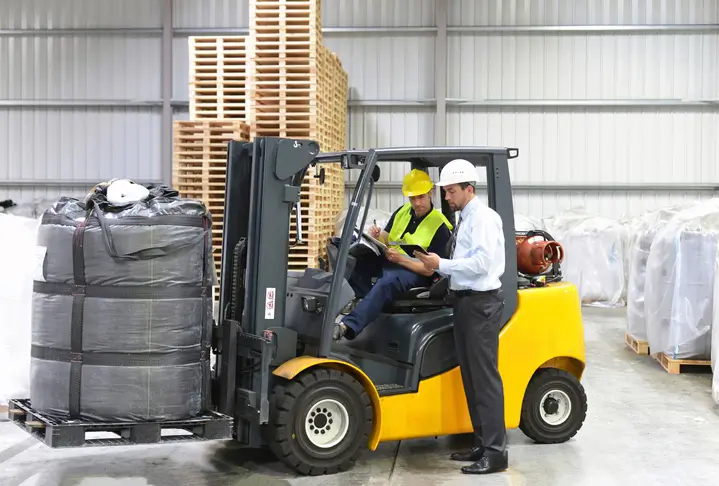What are the OSHA Standards for Construction Industry
Construction sites are dynamic and potentially hazardous environments, where workers are exposed to a wide range of risks. The Occupational Safety and Health Administration (OSHA) is authorized by the Occupational Safety Health Act of 1970 to ensure safe and healthful working conditions. OSHA conducts inspections, totaling 31,820 in FY 2022, focusing on programmed (44%) and unprogrammed (56%) categories. OSHA employs enforcement and cooperative approaches to reduce workplace injuries and fatalities.
OSHA standards for construction aim to mitigate these risks and create a safer workplace by setting forth guidelines that employers must follow. Follow these seven construction OSHA standards steps to identify and comply with major OSHA construction requirements for your job site for the prevention of injuries
Comply With The OSHA Standards For Construction
- Step 1: Address leading hazards with OSHA requirements
- Step 2: Identify other applicable OSHA standards
- Step 3: Survey for additional hazards
- Step 4: Develop a Safety and Health Program
- Step 5: Provide employee training
- Step 6: Manage recordkeeping, Reporting and Posting
- Step 7: Access further compliance assistance on OSHA’s website
Step 1: Address Leading Hazards With OSHA Requirements
The first step of construction safety and OSHA standards and adhering to OSHA regulations is to focus on addressing leading hazards. Falls, a predominant cause of fatalities in construction, demand meticulous attention. OSHA provides extensive resources, including fact sheets, booklets, and standards (29 CFR 1926 Subpart M), emphasizing fall protection measures. Stairways and ladders, significant sources of injuries, are covered with OSHA booklets and standards (29 CFR 1926 Subpart X), promoting safe usage and prevention of mishaps.
Scaffolding usage is addressed through booklets, fact sheets, and standards (29 CFR 1926 Subpart L), ensuring comprehensive guidance. Electrical hazards are tackled with booklets, QuickCards, and standards (29 CFR 1926 Subpart K). Trenching and excavation safety, highlighted as hazardous operations, are extensively covered with QuickCards, fact sheets, posters, and standards (29 CFR 1926 Subpart P). Motor vehicle safety and highway work zones are addressed through QuickCards, fact sheets, and standards (29 CFR 1926 Subpart O and G), emphasizing safety in vehicular operations.
Employers are encouraged to consult OSHA’s frequently cited standards for construction and the Multi-Employer Citation Policy for comprehensive compliance. The provided resources and guidelines empower construction industry stakeholders to prioritize safety, mitigate risks, and foster a secure working environment.
Step 2: Identify Other Applicable OSHA Standards
In Step 2 of ensuring OSHA standards and regulations, beyond the initial requirements covered in Step 1, additional OSHA standards may apply to your job site. Firstly, the Hazard Communication Standard necessitates employers to create a program addressing hazardous chemical exposure, including safety data sheets, training, and labeling. Hand and power tools, ubiquitous in construction, are subject to specific OSHA standards outlined in 29 CFR 1926 Subpart I.
The Silica Standard aims to limit workers’ exposure to respirable crystalline silica, particularly relevant for those using concrete or masonry products. Job sites employing cranes, derricks, hoists, elevators, or conveyors must adhere to standards in 29 CFR 1926 Subpart CC and Subpart N. Welding, cutting, and brazing activities are regulated by 29 CFR 1926 Subpart J. Confined spaces pose potential hazards, and guidelines under 29 CFR 1926 Subpart AA must be followed.
Fire safety and emergency action planning are crucial, with guidelines provided in 29 CFR 1926 Subpart F. Importantly, employers must adhere to the General Duty Clause, maintain a hazard-free workplace, and regularly review OSHA’s construction standards (29 CFR 1926) for applicable requirements. The provided resources, including booklets and web pages, offer detailed information on each standard to aid compliance. Employers can access free copies of OSHA’s construction standards online or order bound volumes for further reference.
Step 3: Survey For Additional Hazards
In Step 3 of ensuring workplace safety, it is crucial to conduct a thorough hazard survey using various tools and resources. Construction safety checklists, as provided in the OSHA Pocket Guide: Construction (Publication 3252, 2005), offer a systematic approach to identifying potential hazards. OSHA’s Safety and Health Information Bulletins, specifically in the Construction Operations section, provide additional insights.

Utilizing OSHA’s Hazard Identification Training Tool, a game-based training resource aids small business owners and workers in grasping the core concepts of hazard identification, enhancing their ability to recognize workplace risks.
Further, the step encourages the examination of specific workplace safety and health hazards such as asbestos, asphalt fumes, carbon monoxide, chemical hazards, heat, laser hazards, lead, occupational noise exposure, silica, and toxic metals. Resources like OSHA Safety and Health Topics Pages, fact sheets, and expert advisors offer comprehensive information on each hazard, empowering employers and workers to proactively address and mitigate potential risks in the construction environment.
Step 4: Develop A Safety And Health Program
OSHA’s construction standards mandate that construction employers establish accident prevention programs, incorporating regular inspections by competent individuals designated by the employer, as outlined in 29 CFR 1926.20(b). This proactive approach ensures frequent assessments of job sites, materials, and equipment to identify and rectify potential hazards promptly.
Notably, OSHA’s Construction-Focused Inspection Policy acknowledges responsible contractors with effective safety and health programs, encouraging others to adopt similar measures. Contractors implementing robust programs may be eligible for focused inspections, a narrower and targeted evaluation of leading construction hazards, as opposed to comprehensive inspections.
To aid in program development, OSHA provides accessible resources. The Construction eTool offers an online tool focusing on safety and health program components. Employers can also request a free on-site consultation through OSHA’s On-site Consultation Program. Additionally, OSHA’s Recommended Practices for Safety and Health Programs in Construction serve as a valuable guide for constructing effective safety measures in the construction industry.
Step 5: Provide Employee Training
In the next step, begin by familiarizing yourself with the general safety training and education standards outlined in 29 CFR 1926.21 of OSHA’s construction standards. Explore specific requirements in OSHA Publication 2254. Access OSHA’s resources, including 10-Hour Construction Industry Outreach-Trainer Presentations and the Training and Reference Materials Library. Watch hazard-minimizing videos and utilize Spanish-language materials.

Enrich training using resources from OSHA’s Susan Harwood Training Grant Program. For suitable classes, explore the Outreach Training Program, find 10- or 30-hour Outreach Classes, and learn about courses from OSHA Training Institutes. These resources enable employers to provide comprehensive, compliant training, fostering a safer construction environment.
Step 6: Manage Recordkeeping, Reporting And Posting
Among one of the OSHA standards for construction, it is essential to maintain records of workplace injuries and illnesses, as detailed in 29 CFR 1904. Exemptions exist for employers with 10 or fewer employees throughout the previous calendar year, provided they adhere to reporting requirements. Regardless of exemption status, employers can download OSHA’s recordkeeping forms or order them from the OSHA Publications Office, ensuring compliance with 29 CFR 1904 regulations.
Fatalities and severe injuries demand immediate attention. Employers, irrespective of size or industry, must report work-related fatalities within 8 hours and inpatient hospitalizations, amputations, and eye losses within 24 hours, as stipulated by 29 CFR 1904.39. Additionally, OSHA requires certain employers to electronically submit injury and illness data through the Injury Tracking Application (ITA), as outlined in OSHA’s Final Rule to Improve Tracking of Workplace Injuries and Illnesses.
An essential aspect of compliance involves displaying the OSHA Poster in a prominent workplace location, with specific guidelines for dispersed activities like construction, as per 29 CFR 1903.2. Furthermore, the OSHA construction standard 29 CFR 1910.1020 mandates employers to provide access to employee exposure and medical records, maintaining them for 30 years. The OSHA booklet “Access to Medical and Exposure Records” (OSHA Publication 3110, 2020) offers insights.
Step 7: Access Further Compliance Assistance On OSHA’s Website
In Step 7, employers can access additional assistance and information tailored to their specific needs by accessing the OSHA construction industry. Smaller employers can explore the Small Business page and utilize the On-site Consultation Program. Spanish-speaking employees can benefit from OSHA’s Spanish language resources and translations.
You can also explore industry-specific resources, pandemic influenza guidance, cooperative programs, alliances, and voluntary protection programs. For further assistance, you can search the OSHA website, call/OSHA standards for construction at the OSHA 800 Number (800-321-OSHA), email questions, contact local OSHA or state plan offices, or request a free on-site consultation.
Conclusion:
The OSHA standards for construction serve as a critical framework for ensuring the safety and well-being of workers in an industry where risks are inherent. Employers play a pivotal role in this process by understanding, implementing, and continuously updating their safety programs to meet or exceed OSHA standards. Ultimately, a commitment to OSHA compliance not only protects the workforce but also contributes to the success and sustainability of the construction industry as a whole.






